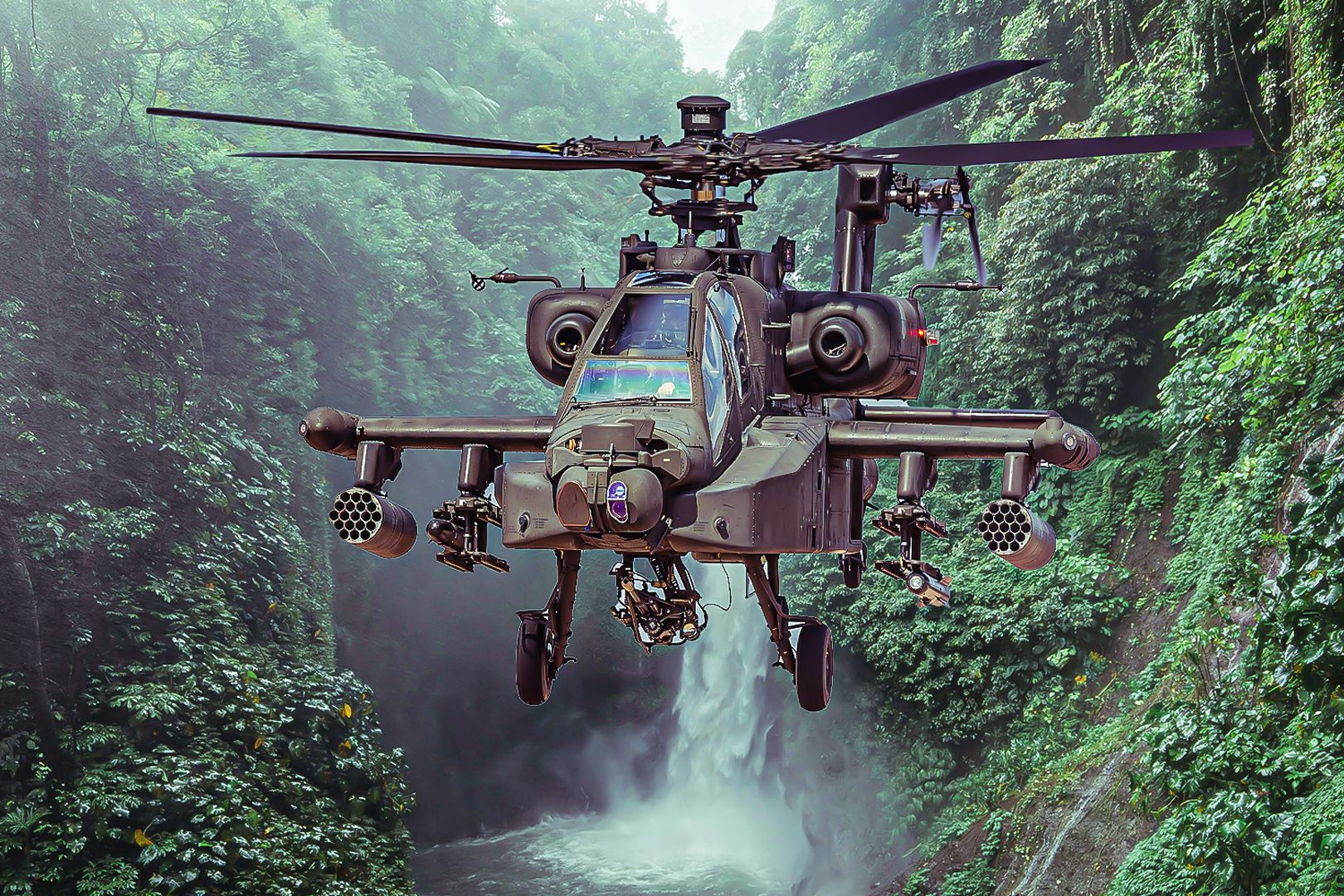Summary The AH-64 Apache has a deadly arsenal, including a 30mm chain gun, rockets, and missiles. Lockheed Martin produces the Target Acquisition and Designation System (TADS) for the Apache. TADS has shown exceptional accuracy in combat operations, such as during Operation Just Cause and the Persian Gulf War.
As I mentioned in a recently published article in Simple Flying, the Boeing AH-64 Apache is arguably the most devastating helicopter gunship ever devised (although, playing devil's advocate, one could reasonably also make the case for the American-made Bell AH-1 Super Cobra [AKA "Whiskey Cobra"] or the Soviet/Russian-made Mi-24 "Hind" ). A major reason for the Apache's battlefield success and reputation is its impressive arsenal, including: M230 30mm chain gun Hydra-70 and CRV7 70 mm (2.75 in) air-to-ground rockets, AGM-114 Hellfire missile AIM-92 Stinger missile The Apache is arguably the world's most effective attack helicopter.

We now examine how this chopper was utilized in US military deployments. However, the legendary whirlybird's formidable menu of ordnance wouldn't do much good without an accurate targeting system to ensure that those munitions actually hit their targets! With that in mind, Simple Flying now takes a look at the AH-64's top-notch, state-of-the-art Target Acquisition and Designation System (TADS). The basics of TADS Though the AH-64 is a Boeing product (McDonnell Douglas prior to that [1984-1997] and Hughes Helicopters [1975-1984]), the TADS system is the product of one of Boeing's rival aerospace & defense firms, Lockheed Martin, currently best known for the F-16 Fighting Falcon (AKA the "Viper"), F-22 Raptor , and F-35 Lightning II (the latter two birthed by the company's legendary "Skunk Works" division.
Learn more about Skunk Works . Here's what Lockheed Martin's official info page says about the TADS, or to use their own full acronym, the M-TADS/PNVS (Modernized Target Acquisition Designation Sight/Pilot Night Vision Sensor): "M-TADS/PNVS is the combat-proven, advanced electro-optical fire control system used by AH-64D/E Apache helicopter pilots for long-range precision engagement and pilotage capabilities in day, night and adverse-weather missions. With a 14-year track record of performance improvement, M-TADS/PNVS offers increased standoff ranges for U.
S. Forces while providing aircrews with greater resolution for pilotage, targeting and enhanced situational awareness." "More than 1,240 systems have been delivered to the U.
S. Army and international customers since fielding in 2005. Through continued technological advancements to the M-TADS/PNVS system such as the Modernized Day Sensor Assembly (M-DSA) and Modernized Turret (M-TUR), Lockheed Martin remains committed to delivering innovative, affordable sensor system capabilities to our customers.
" From there, the online brochure lists the following specialized features: Digital video for enhanced tracking and recording Streamlined, two-level maintenance Line-replaceable modules that simplify field maintenance More specifically, it is Lockheed Martin's Missiles and Fire Control segment in Orlando, Fla. that produces the M-TADS/PNVS. Poland is set to become the world's largest operator of the Apache attack helicopter after the United States.
Operational History Lockheed Martin signed the original TADS/PNVS production contract on April 30, 1982, and the first such system was fielded in 1983. Six years later, the PADS system proved its worth when the Apache was first "blooded" in combat during Operation Just Cause, the mission to remove Panamanian strongman (and alleged narcotics trafficker) Manuel Antonio Noriega (February 11, 1934 – May 29, 2017). During that conflict, the Apache's Hellfire missile and TADS tandem left a particularly positive impression (on the American troops, that is; the Panamanian Defense Forces [PDF] adversary, not so much) during an assault on the PDF's Comandancia building.
According to an official document published by the Joint History Office of the Office of the Chairman of the Joint Chiefs of Staff (JCS): “The Hellfire missiles of the Apache helicopters were so accurate that, according to General [Carl W.] Stiner , ‘You could fire that Hellfire missile through a window four miles away at night.’ During the fighting, Task Force BAYONET killed 24, wounded 9, and captured 463 PDF troops.
” The TADS's accuracy and efficacy were further repeatedly demonstrated during the 1991 Persian Gulf War AKA Operation Desert Storm. Therein, the TADS targeting system enabled the Apaches to rain both literal and figurative Hellfire(s) upon the main battle tanks (MBTs) and armored personnel carriers (APCs) of then-Iraqi dictator Saddam Hussein that had been illegally occupying the oil-rich Gulf Arab nation of Kuwait. The AH-64s destroyed over 500 T-72, T-62, and T-55 MBTs, along with hundreds of additional APCs (such as the BMP-1, AKA the "Bimp"), trucks, and other vehicles.
The way forward for TADS The contract for the newer & improved M-TADS/PNVS version (unofficially nicknamed "Arrowhead" by the US Army) of TADS was signed by officials of Army Contracting Command at Redstone Arsenal , Alabama, back in December 2022. The contract was reportedly worth $95.8 million USD.
According to John Keller of Military-Aerospace Electronics : "The M-TADS/PNVS has several subcomponents. The lower M-TADS turret contains the targeting system, which has day and night electro-optical sensors. The Arrowhead targeting sensor suite has forward looking infrared (FLIR) elements of the TADS and the PNVS to provide modern technological and precision engagement, and ensure the Army’s Apache helicopters remains an effective attack helicopters well into the future.
..The new day sensor structure assembly offers fields of view that match the Arrowhead FLIR fields of view to accommodate image blending.
" "The system provides a new laser pointer marker that improves coordination with ground troops, and an updated multimode laser with eye-safe lasing capability that supports flight in urban environments and home-station training...
On this contract Lockheed Martin will do the work at locations be determined with each order, and should be finished by November 2027." It is the world's most advanced and proven helicopter..



















